Hull Old Town: The sleeping giant that could become Yorkshire's next UNESCO World Heritage Site
There are only two such designated sites in Yorkshire - the model village of Saltaire and the ruins of Fountains Abbey.
Yet many Hullensians feel that their city's ancient quarter - the Old Town - has a claim to be the third to win UNESCO recognition and the resulting exposure and prestige.
Advertisement
Hide AdAdvertisement
Hide AdThe streets of the Old Town evoke this famous port's proud mercantile past - but they're often overlooked by visitors in favour of the history that can seen in nearby York.
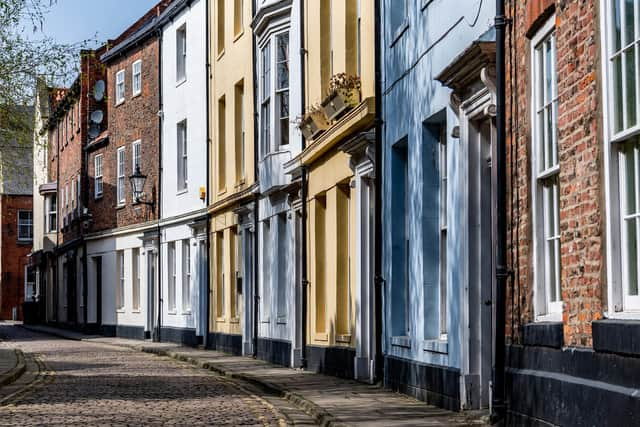

The Old Town is a jewel that's never quite shone, and it's one which has the potential to lure far more people to Hull, a destination which punches below its weight on the tourist trail.
It has Georgian architecture, fine museums, the house where slave trade abolitionist William Wilberforce lived, historic inns - including one where Civil War plotters allegedly met - and the homes of the city's wealthy merchant classes who made their fortune from the sea. The quarter is full of quirks, such as the world's smallest window in the wall of the George Hotel.
Forty per cent of Hull's listed buildings can be found here, and its last remaining example of a medieval street pattern.
Advertisement
Hide AdAdvertisement
Hide AdFilm and TV scouts have recently discovered its fantastically-preserved buildings, which can easily stand in for Georgian London and make for a much more affordable location shoot. The Old Town has appeared in ITV's Victoria and an adaptation of Charles Dickens's David Copperfield.
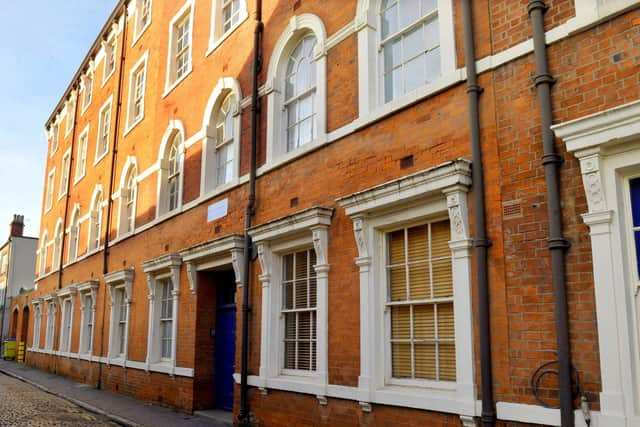

And it's easy to see why - narrow alleys, cobbled streets and atmospheric pubs where sailors, whalers and traders would have gone to spend their earnings after returning from long and challenging sea voyages. The Antarctic explorers Scott and Shackleton prowled the streets of the Old Town looking for hardy Hull trawlermen to recruit as crew for their expeditions to the South Pole.
It already has Heritage Action Zone status, meaning that Historic England are working with Hull City Council to fund regeneration.
Yet incredibly, in the 1960s all of this rich history was almost wiped from the map when the council pursued a roadbuilding plan that would have seen the High Street become a dual carriageway and most of its 18th-century buildings demolished, with only Wilberforce House and Maister House preserved.
Advertisement
Hide AdAdvertisement
Hide AdIt took the intervention of the newly-formed Hull Civic Society to save the heart from being ripped out of the Old Town, although they were forced to concede that Castle Street, a highway which splits the Old Town in half, would have to be constructed with the loss of several 17th-century gems.
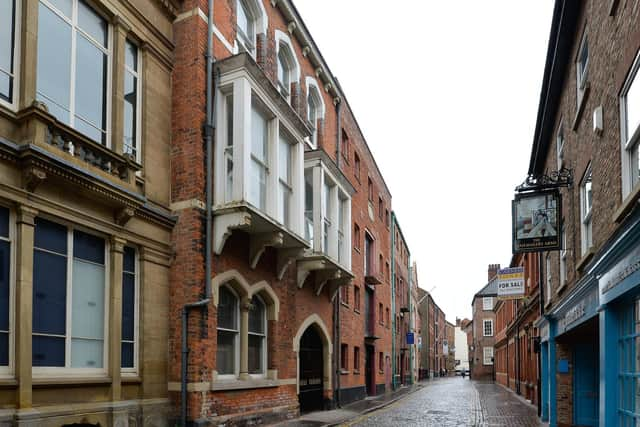

Local historian and campaigner Adam Fowler was so impressed with the Old Town's role in Hull's City of Culture year back in 2017 that he is now pushing for it to be designated as a UNESCO World Heritage Site, and believes it has the potential to mirror the transformation of Liverpool's heritage waterfront into a global tourist destination.
However, he accepts the constraints of image, perception and location are holding it back.
"Hull is at the end of the line, so you have to do something really strong and special to attract people here. When people do visit, they are mesmerised by the Old Town - the medieval streets, Trinity House, Wilberforce House. But it's got an image problem and it needs more confidence.
Advertisement
Hide AdAdvertisement
Hide Ad"It's got the water and the history, and the Old Town's heart is beating now - we just need to make the most of it."
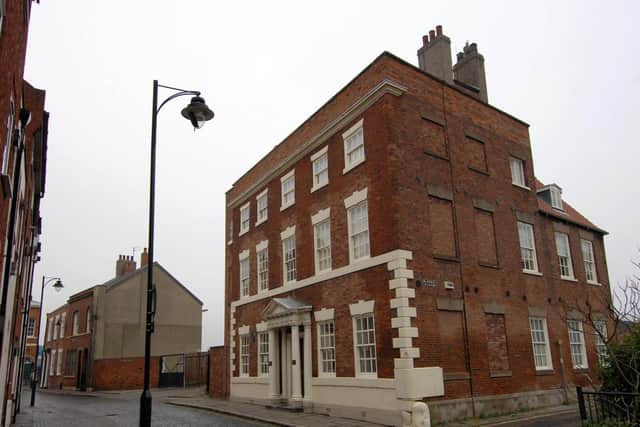

Adam describes the Old Town as the inner layer of an onion which is ringed by the Victorian and Edwardian town centre that became Hull's major commercial and retail area. Now that Hull High Street is no longer part of the 'main drag', the Old Town is peaceful, pedestrianised and sought out by those who appreciate its charms.
Its past is undoubtedly fascinating - as Hull developed as a trading post and received royal patronage during the medieval period, its first streets were enclosed as a walled town. Although many of the buildings from this era have not survived - unlike in York - the street pattern of the Old Town remains. From 1720, advances in engineering meant large docks could be sunk in Hull, and the Georgian period saw the Old Town boom as merchants built grand residences fronting onto the High Street, with their warehouses and private wharves at the rear.
"It has that olde worlde feel, with the pubs - The Black Boy is the oldest in Hull - and the central spine of the High Street that follows the line of the River Hull.
Advertisement
Hide AdAdvertisement
Hide Ad"York has a big influence on Hull and the cities are often pitted against each other, but there is so much heritage and such a story to tell here.
"There's a lot of history - the links with William Wilberforce and the poet Andrew Marvell, who lived and went to school in the Old Town. The film crews tend to focus on the High Street and places like Maister House. With the frontage of the merchants' houses and the smugglers' pubs, it's really quite unique and special. The crews don't have to do much to change it to look like the 18th century.
"There are snickets and interesting architecture that shows Hull's links with Europe - some of the building work is Flemish and there are nods to food, produce and trading."
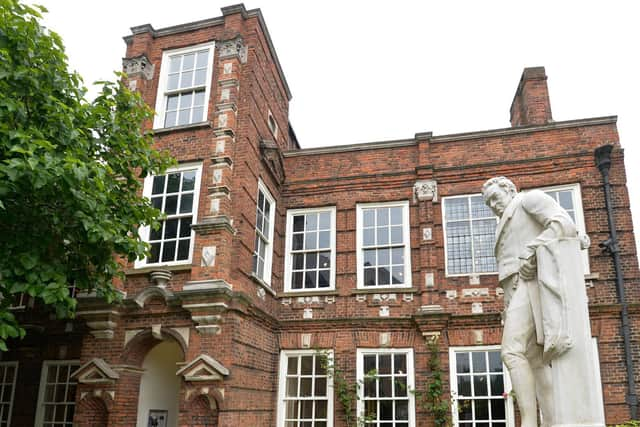

Adam is also keen to campaign for the reinstatement of the old Humber Ferry, which ran from Victoria Pier to New Holland before the opening of the Humber Bridge, as a pleasure service offering tours of the historic docks.
Advertisement
Hide AdAdvertisement
Hide Ad"There are seven miles of waterfront and we just don't make enough of them. Liverpool managed to really capture their waterfront about 20 years ago, they were adventurous but Hull never grasped that. We would love to have an old ferry back to run pleasure trips.
"Hull needs to be proud and bold. It struggles with self-image but the future is bright."
Hull Civic Society chair John Scotney believes the key to drawing more visitors into the Old Town is to make it welcoming, friendly and busy at all times of day and night by encouraging a mixture of uses.
The group have been involved with the restoration of Bailes House and the Danish Buildings, which have been converted into offices for Allenby Commercial, a company committed to the regeneration of the Old Town.
Advertisement
Hide AdAdvertisement
Hide Ad"Bailes House provides a wonderful snapshot of the development of the Old Town, with the offices fronting onto the street and the older building closer to the river. With Whitefriargate, they're looking at the possibilities for reuse of the buildings. They're mostly commercial - some Georgian, some Victorian - and the street has declined because a lot of big-name shops moved out. It needs its footfall back and the developments are a mix of residential, locally-owned businesses and community use."
He has observed that the trend for employers to move into new offices in the Old Town is having a positive impact - brands such as jewellers Hugh Rice now have their headquarters in the district - and ensuring there is a balance.
"There is the conversion of King William House and there are plans to re-open the old King Billy pub. Trinity Market is much livelier since the new food court opened.
"We need to sell the Old Town as somewhere to spend a day. It's noticeable on Heritage Open Days that people see parts of the city they've never seen before, and visitors tell us how lovely it is. Capitalising on the attractions is the only way of moving forward.
Advertisement
Hide AdAdvertisement
Hide Ad"The Old Town needs to regain that 'oomph' that City of Culture gave us. The Maritime City project will hopefully bring people in. They need to feel at leisure, like they have time to browse rather than looking at their watches and rushing back to the car park.
"Hull has the maritime history and no other city in Yorkshire can offer that. It's definitely worth pushing for UNESCO status - it would have a massive effect and it would raise awareness.
"The Old Town is deserving of it - it has a distinctive shape, the street pattern is intact and it has some seriously fine buildings. High Street doesn't have a single shop, but it was where the top level of Hull's high society used to live and many of their houses still survive.
"Back in the 1960s and 70s, we were regarded as a bunch of lunatics for wanting to preserve the Old Town! So much of it was nearly lost."
The Old Town - what to see
Advertisement
Hide AdAdvertisement
Hide AdWilberforce House - the birthplace of slave trade abolitionist William Wilberforce. It was once a merchant's house and there is a private quay with access to the River Hull. It's now a museum that focuses on his work as a social reformer.
Trinity House - is both a building and a charity dedicated historically to the welfare of seafarers and their families. The organisation owns a substanstial amount of property in the Old Town to this day. It began as a guild in the 14th century, and ended up managing the harbour at Hull and pilot services in the Humber Estuary. Today, the charity - which also runs a school in Hull - occupies an ornate 18th-century building which is open on selected Mondays throughout the year for guided tours led by master mariners.
Maister House - this Grade I-listed former merchant's house is in the care of the National Trust. It is rented out as offices, but since its last tenant left in 2016 has been closed to the public. In the last few months the National Trust have been negotiating a new lease, raising hopes it could re-open. The Maister family traded with the Baltic ports and the house was built for them in 1743.
Corn Exchange - although not as impressive an example of a corn exchange as those in Leeds and Doncaster, it's still an important building. It was built on the site of a customs house in the 1850s and later converted into a museum. It suffered bomb damage during the Hull Blitz, but was repaired and is now Hull and East Riding Museum.
Advertisement
Hide AdAdvertisement
Hide AdParliament Street - there are several fine Georgian merchants' houses here, and the Neptune Inn.
The Black Boy - this former smugglers' haunt is the oldest pub in Hull. It dates back to 1336, when it was used as a tenement block, and was licensed in 1729. It has also been a brothel and a coffee house during its colourful history. It was named after a Moroccan boy who worked there in the 1730s.
Minerva Hotel - established in 1829, this waterfront inn is steeped in maritime history and contains the smallest pub room in Britain.
Blaydes House - another merchant's house on the High Street that dates from the 1700s. It was built for the Blaydes family, who were both wealthy and influential and used the property as their main residence and business premises. They owned two shipyards, one on the River Hull and the other at Hessle Cliff, and manufactured vessels for the Royal Navy and merchant fleets. They produced a collier called Bethia which was later re-named and became the famous HMS Bounty. They remained there until the 19th century, when the family firm was sold and they left Hull. It became offices until 1999, when it was sold to the University of Hull and is now home to their maritime studies centre.
Advertisement
Hide AdAdvertisement
Hide AdBailes House & Danish Buildings - Allenby Commercial renovated these two historic buildings and they are now offices. The Danish Buildings were built in the mid-1800s and Bailes House is a merchant's house with 17th-century origins and later additions.
A message from the editor - and how to subscribe for postal copies of The Yorkshire Post
Editor’s note: first and foremost - and rarely have I written down these words with more sincerity - I hope this finds you well.
Almost certainly you are here because you value the quality and the integrity of the journalism produced by The Yorkshire Post’s journalists - almost all of which live alongside you in Yorkshire, spending the wages they earn with Yorkshire businesses - who last year took this title to the industry watchdog’s Most Trusted Newspaper in Britain accolade.
Advertisement
Hide AdAdvertisement
Hide AdAnd that is why I must make an urgent request of you: as advertising revenue declines, your support becomes evermore crucial to the maintenance of the journalistic standards expected of The Yorkshire Post. If you can, safely, please buy a paper or take up a subscription. We want to continue to make you proud of Yorkshire’s National Newspaper but we are going to need your help.
Postal subscription copies can be ordered by calling 0330 4030066 or by emailing [email protected]. Vouchers, to be exchanged at retail sales outlets - our newsagents need you, too - can be subscribed to by contacting subscriptions on 0330 1235950 or by visiting www.localsubsplus.co.uk where you should select The Yorkshire Post from the list of titles available.
If you want to help right now, download our tablet app from the App / Play Stores. Every contribution you make helps to provide this county with the best regional journalism in the country.
Sincerely. Thank you.
James Mitchinson
Editor
Comment Guidelines
National World encourages reader discussion on our stories. User feedback, insights and back-and-forth exchanges add a rich layer of context to reporting. Please review our Community Guidelines before commenting.